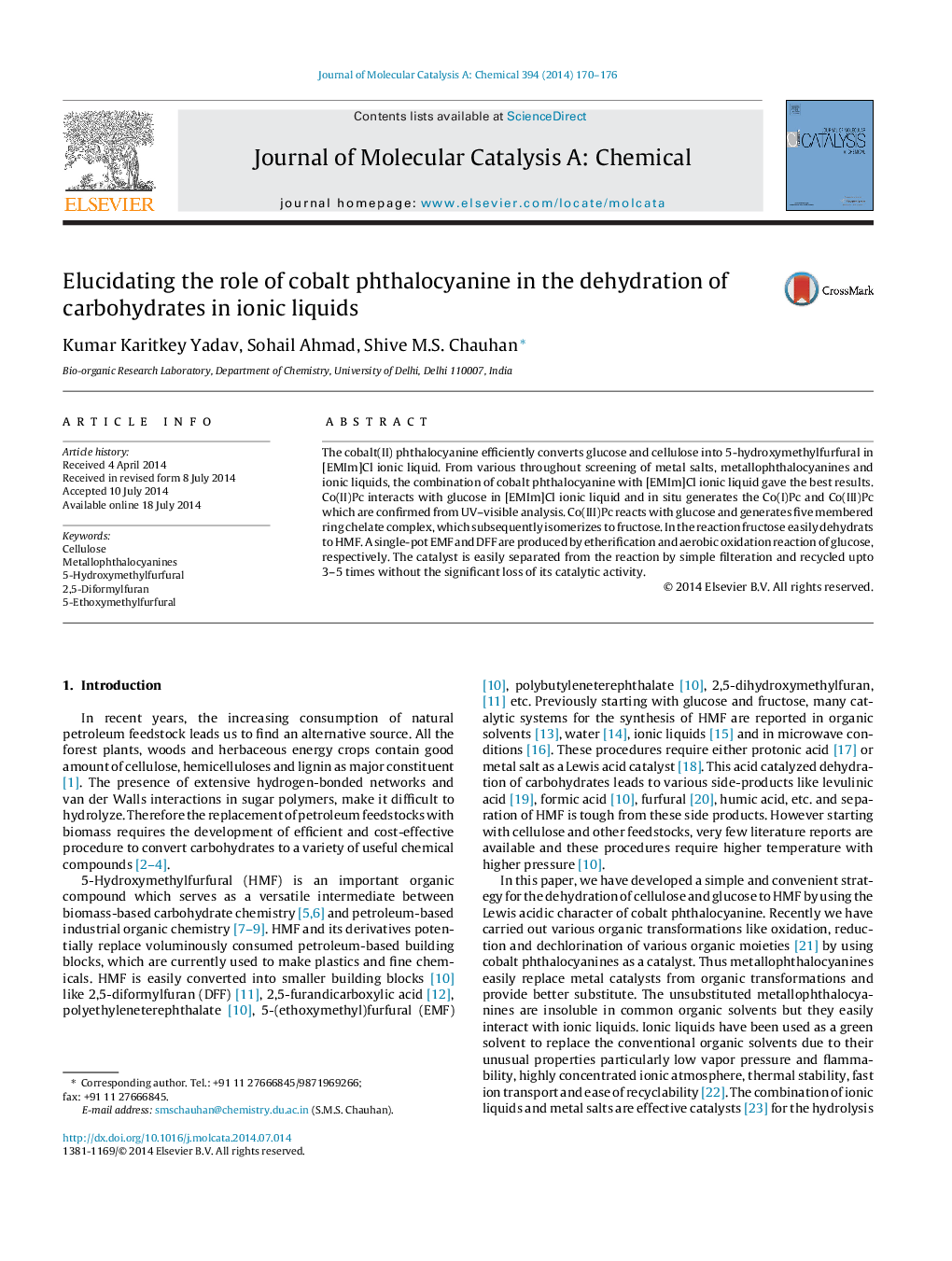| Article ID | Journal | Published Year | Pages | File Type |
|---|---|---|---|---|
| 65424 | Journal of Molecular Catalysis A: Chemical | 2014 | 7 Pages |
•In ionic liquid, Co(I)Pc and Co(III)Pc was generated from Co(II)Pc.•The more Lewis acidic character of Co(III)Pc is responsible for the isomerization.•Co(III)Pc forms a more stable five membered ring chelate complex with glucose.•Selectivity of HMF production was best in combination of [EMIm]Cl and Co(II)Pc.•In a single pot, DFF and EMF were obtained from glucose in better selectivity.
The cobalt(II) phthalocyanine efficiently converts glucose and cellulose into 5-hydroxymethylfurfural in [EMIm]Cl ionic liquid. From various throughout screening of metal salts, metallophthalocyanines and ionic liquids, the combination of cobalt phthalocyanine with [EMIm]Cl ionic liquid gave the best results. Co(II)Pc interacts with glucose in [EMIm]Cl ionic liquid and in situ generates the Co(I)Pc and Co(III)Pc which are confirmed from UV–visible analysis. Co(III)Pc reacts with glucose and generates five membered ring chelate complex, which subsequently isomerizes to fructose. In the reaction fructose easily dehydrats to HMF. A single-pot EMF and DFF are produced by etherification and aerobic oxidation reaction of glucose, respectively. The catalyst is easily separated from the reaction by simple filteration and recycled upto 3–5 times without the significant loss of its catalytic activity.
Graphical abstractFigure optionsDownload full-size imageDownload high-quality image (64 K)Download as PowerPoint slide
